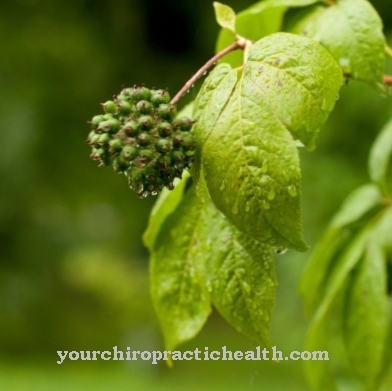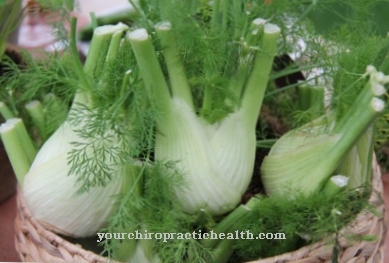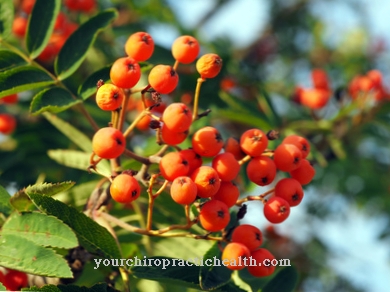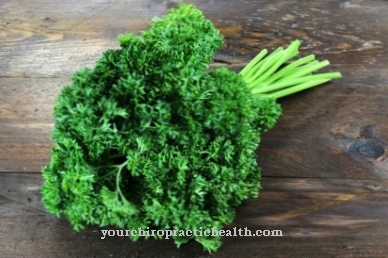At the Acker-Hellerkraut it is a medicinal plant that is considered to be helpful against inflammation. However, little is known about their healing effects.
Occurrence and cultivation of the Acker-Hellerkrauts

The Acker-Hellerkraut grows preferentially in Central Europe. The plant can be found most frequently in fields, along roadsides and in spruce forests. The medicinal herb thrives best on calcareous soils, because without lime it cannot grow. In addition, the Acker-Hellerkraut often occurs on loose loam soils that are rich in nutrients. It is not uncommon for the plant to grow on cereal or root crop fields.
The flowering time of the Acker-Hellerkrauts is between April and June. Sometimes it can also last until September. The height of the plant is between 10 and 40 centimeters. The bald herb is yellow-green in color. If the plant is crushed, it will smell garlic. The round-oval cotyledons reach a length of 6 to 8 millimeters. The mostly branched stalk of the Acker-Hellerkrauts grows upright. As it grows, a rosette consisting of jagged leaves first appears. Later, the thin stalks sprout. Small, white flowers then grow on these.
Effect & application
The ingredients of Acker-Hellerkrauts include important vitamins such as vitamin C as well as magnesium, oil and mustard oil. Various properties are ascribed to the medicinal plant that have a positive effect on human health. The Acker-Hellerkraut has an antibacterial and anti-inflammatory effect both externally and internally.
The herb and the seeds of the plant are used therapeutically. Since the flowers and young leaves are edible, they can also be used in the kitchen. They have a cress-like, spicy-hot taste. Another typical feature is the herb's intense scent. The plant is relatively insensitive to herbicides.
Before using the Acker-Hellerkraut for therapeutic purposes, the pods are peeled off the black seeds after the harvest. However, it is essential to pay attention to the dryness of the seeds. To dry them, they can simply be left in the sun. But drying in the oven is also possible, provided the heat is not too great. Then the seeds are ground up and stored in a can.
There are different ways to use the Acker-Hellerkraut therapeutically. In the event of a cold, for example, tea can be made to combat flu-like symptoms such as runny nose. It also has a positive effect on the kidneys, liver and stomach. Anyone suffering from stomach or intestinal inflammation should, however, better refrain from drinking the tea.
The tea can also be used as an external treatment for wraps or pads, such as skin inflammations and boils. A tincture with Acker-Hellerkraut can also be used, which is mixed with water. If there is a vaginal infection, tea helps in the form of a hip bath.
A decoction made from grinding seeds is considered helpful for blood cleansing if the patient has an excess of uric acid in the blood, gout, or rheumatic diseases. Dried seeds can also be chewed if there is inflammation in the mouth or gums. Furthermore, the Acker-Hellerkraut has a toning effect.
Importance for health, treatment & prevention
Although Acker-Hellerkaut has numerous positive effects on health, it is nowadays rather unknown for therapeutic use. Due to its high vitamin C content, it was used in previous years to treat and prevent vitamin C deficiency or scurvy. This disease was most common among seafarers.
Nowadays, the Acker-Hellerkraut can be used to treat women's problems such as menstrual cramps or inflammation of the vagina. Due to the sweat-inducing and expectorant effect, the herb is also used to treat fever and bronchitis. It also has a diuretic effect, which makes it suitable for treating kidney infections.
In naturopathy, Acker-Hellerkaut is used to treat eye disorders. Caution should be exercised in this treatment. The substances in the plant can irritate the eyes. In addition, the medicinal herb has the property of killing bacteria in the form of pressed juice. The medicinal plant is also suitable for treating insect bites or tick bites. In this way, the Acker-Hellerkraut prevents the sting or bite points from swelling too much. Furthermore, the annoying itching is counteracted. However, if viruses get into the body through a tick bite, the plant has no positive effect.
Other possible areas of application are uterine inflammation, growths of the uterine lining, rheumatism, liver weakness, bronchitis, endometriosis, inflammation of the skin as well as boils and carbuncles. Homeopathy also uses Acker-Hellerkraut for therapeutic purposes. So the medicinal plant is used strongly diluted against urinary tract diseases.
When taking the Acker-Hellerkrauts, too much should not be exceeded. The plant is also not suitable for use over a longer period of time. This lowers the number of erythrocytes (red blood cells) in the body. For this reason the dose should always be moderate.
























.jpg)



